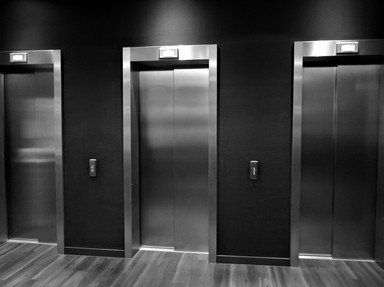Quiz Answer Key and Fun Facts
1. Which is the most common type of elevator?
2. Installed in 1857, which is recognized as the first commercial passenger elevator in the United States?
3. Which of these buildings became the highest glass-floored elevator when it opened to the public on October 21, 2021, giving passengers thrilling, if nerve-wracking, views from 1,219 feet above?
4. Which building became home to the fastest elevator in North America when it opened to the public on November 3, 2014?
5. Which country established the record of being the one with the most elevators per capita in 2024?
6. In 2023, elevators in the United States were calculated to travel 7.2 quintillion feet or 1.36 trillion miles per year.
7. Traditionally we press a button for up or down by an elevator to summon it to where we are. But an elevator innovation has emerged in which we enter the floor we want on a touchscreen, and then the elevator system calculates which elevator car would be the best one to stop where you are, and it tells you which elevator to get on. This is known as what kind of elevator system?
8. A woman survived a 75-floor elevator plunge after the emergency auto brake failed while she was in an elevator in the Empire State Building. Which of these events led up to this near disaster?
9. Who pioneered the development of elevator braking systems?
10. What distinction relating to elevators do Kively Papajohn, Graham Coates and Nicholas White have in common?
Source: Author
Billkozy
This quiz was reviewed by FunTrivia editor
rossian before going online.
Any errors found in FunTrivia content are routinely corrected through our feedback system.
